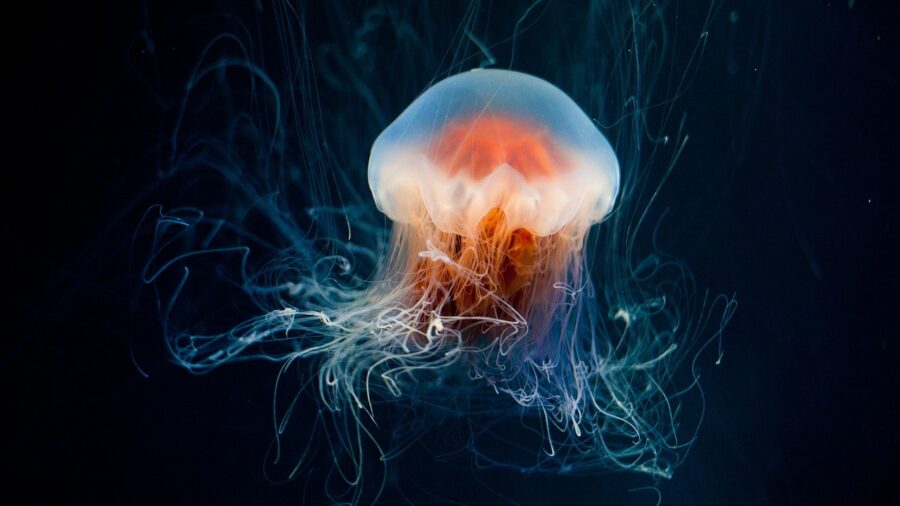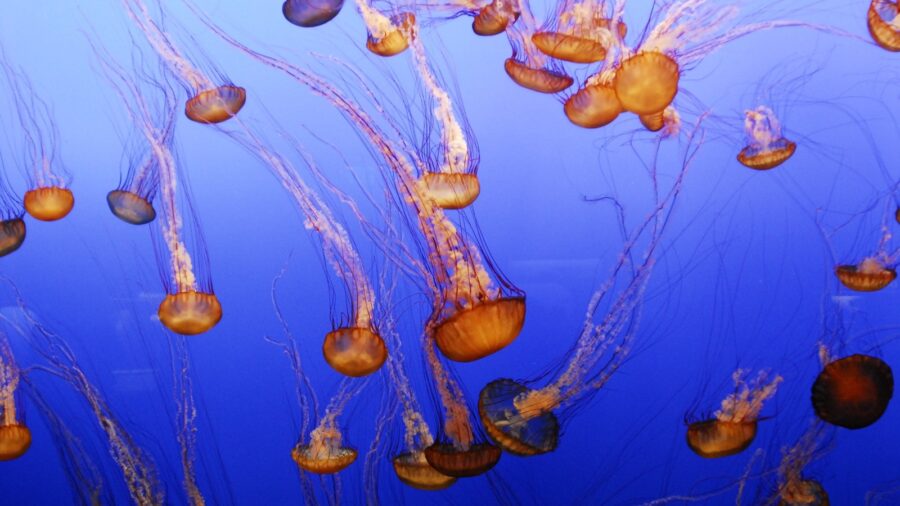Scientists Confused Over Animal Without A Brain Capable Of Learning

Jellyfish have no brains, but learn instead through their eyes and nerves, though researchers are only now able to show that they can change their behavior based on past experiences. How these brainless creatures can learn and change their behavior is a puzzle that is mystifying scientists.
According to ScienceNews, the research, which was reported in Current Biology on September 22, refers specifically to Caribbean box jellyfish (Tripedalia cystophora) and indicates that they are able to make connections between events in their minds.
A study of Caribbean box jellyfish reveals that, without brains, the creatures still have the capacity to learn.
The jellyfish are able to change their behavior, for example, to avoid running into something they see. For neuroethologist Jan Bielecki of Germany’s Kiel University, this indicates that learning might be an essential part of nerve cells, not requiring a highly complex nervous system, but able to occur within what she calls “limited circuitry.” If this is true, it could provide new insight regarding how animals evolved the ability to learn.
The Caribbean box jellyfish has a bell-shaped body from which four knoblike rhopalia hang, with each rhopalium including some 1,000 neurons and six eyes. As they hunt minuscule crustaceans, the jellyfish steer themselves between roots of the mangrove tree in tropical lagoons, performing complex maneuvers that require judging distance based on the contrast between light and shadows.
As they hunt minuscule crustaceans, the jellyfish steer themselves between roots of the mangrove tree in tropical lagoons, performing complex maneuvers that require judging distance based on the contrast between light and shadows.
In murky waters, however, high and low contrast objects can be difficult to track, leading researchers to wonder if these creatures could learn that low contrast objects, which might appear to be in the distance, are actually in closer proximity.
The Jellyfish Tests
Using a tank surrounded by stripes of alternating gray and white, the team of scientists monitored 12 jellyfish via a camera for roughly seven minutes. While they initially appeared to determine the gray stripes to be far away and run into the tank wall, they eventually changed their behavior. Over the course of the experiment, the jellies seemed to begin treating the gray stripes as though they were closer and swam to avoid them.
The average distance of the jellyfish from the wall of the tank began at about 2.5 cm early in the experiment, but later extended to about 3.6 cm by its end. The number of collisions with the wall decreased as well, with the average beginning at 1.8 per minute and ending at 0.78 per minute. Evolutionary biologist Nagayasu Nakanishi from the University of Arkansas called this behavior “really amazing,” having studied jellyfish nervous systems himself, though he was not involved in this study.

Still, Björn Brembs, a neurobiologist at Germany’s University of Regensburg, is less enthusiastic about the results, noting that there was a range of variability in how the jellyfish behaved and that there was a fairly small number of specimens involved in the experiment. While saying it would be “very cool” if the jellyfish were indeed learning and that he would like it to be true, he believes more studies need to be done before the findings are convincing.
Bielecki and his team have done more experiments, including ones that involved removing rhopalia from jellyfish and situating them in front of a screen that displayed low contrast bars. When these bars were displayed an electrical pulse was delivered to imitate the effect of running into an obstacle.
While the rhopalia initially paid no attention to the light gray bars on the screen, they eventually began responding to them, emitting neural impulses the way they would to signal a jellyfish to move away from an obstacle.
This would seem to indicate that the rhopalia can learn on their own, apart from the jellyfish themselves. Behavioral biologist Ken Cheng of Macquarie University in Sydney finds the paper interesting because it gets into the “wiring of how it works.”
Meanwhile, neurobiologist Gaëlle Botton-Amiot wonders how the four rhopalia work together to facilitate the movement of the jellyfish and whether or not they retain what was learned through those neurons if they are removed.
One way or another, these new insights into how jellyfish learn will help us have a greater understanding not only of the nature of learning, but of its evolution within the animal kingdom.












